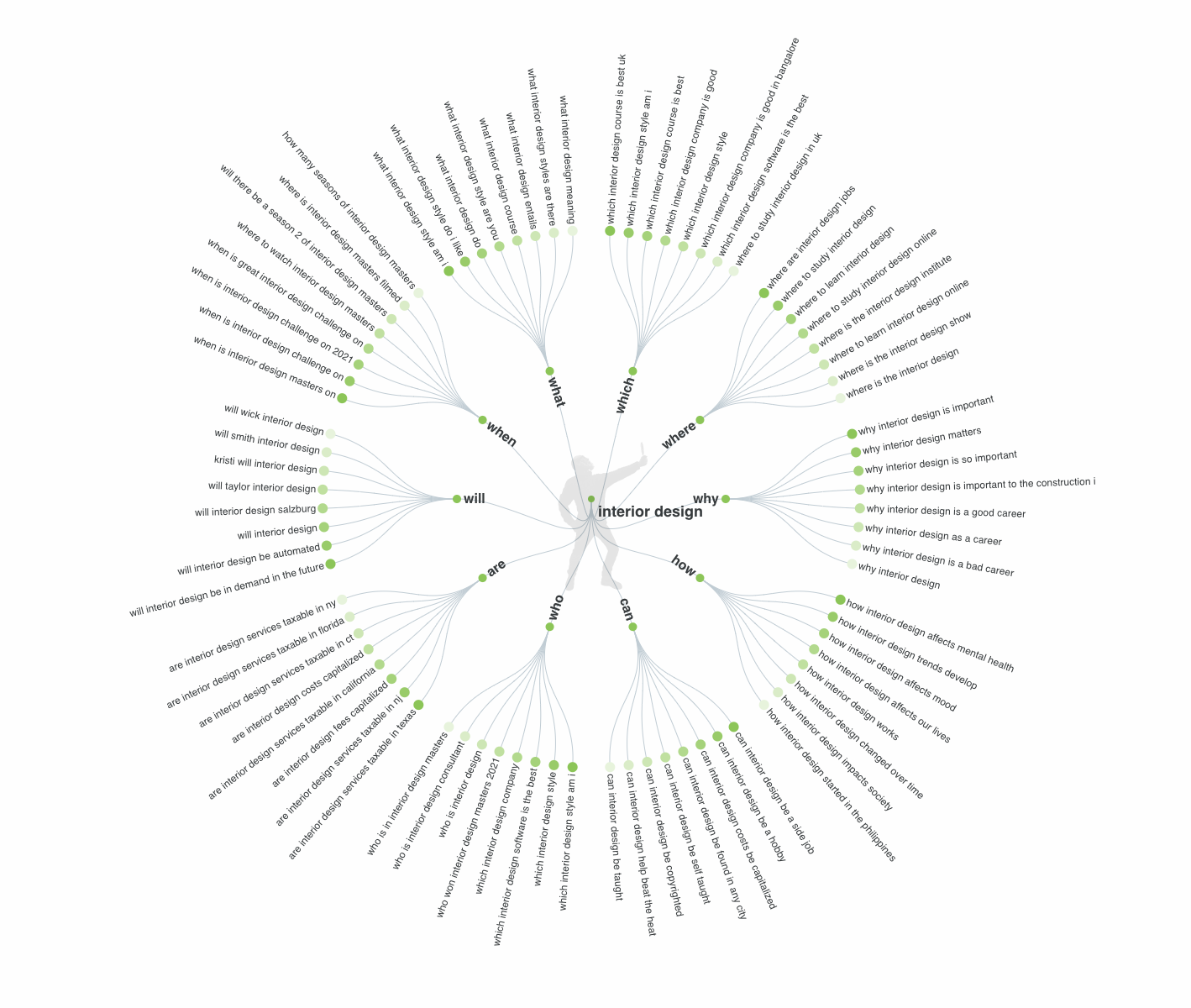7 Tips To Speed Up Your Content Writing
Dec 17, 2021
As much as I encourage all my interior designers to write blogs, I can’t lie… it’s hard. As soon as one deadline is met, just around the corner is another one creeping at you like Joe from the Netflix series You.
There’s no debate about it, blogging is downright time-consuming. According to HubSpot: In 2019, bloggers spent 65% more time writing blog posts, with the average post taking three hours and 57 minutes to write. Behind the Design has over 60 articles, so I’ll let you think about that.
Over the course of my writing, I’ve learned a couple of tips and tricks on how to speed up the process, so it’s only fitting that I share those with you as well.
Related Article: "Why Blogging Can Help you Grow Your Interior Design Business."
1. Have A Content Strategy
You can be the most agile content writer in your team, but if the content you’re producing doesn’t serve your organization’s content strategy plan, then those 4 hours you spent writing one blog post could be going straight to the recycling bin.
On the other hand, if your organization doesn’t have a content marketing strategy, then it’s time to work on that first.
What is a Content Strategy?
According to HubSpot, a content strategy is a plan in which you use content (audio, visual, and/or written) to achieve your business goals. A successful content strategy will attract your target audience at every stage of the funnel and keep them engaged even after a purchase.
When creating a content strategy, it is important to answer the following questions:
- Who’s reading your content?
- What problem will you be solving for your audience?
- What makes you different from your competitors?
- What content formats will you focus on?
- What channels will you be publishing your content on?
- How will your content creation be managed and by who?
- When will you publish the content?
2. Create An Idea Capture System
“Everyone who's ever taken a shower has an idea. It's the person who gets out of the shower, dries off, and does something about it who makes a difference,” Nolan Bushnell.
It doesn’t matter where or when the idea pops into your head, whether it’s the shower, golden thrown, or while scrolling through TikTok, it’s important to have an idea capture system in place so these valuable thoughts don’t go to waste.
I don’t know about you, but I used to get so frustrated with myself for not being able to remember my great ideas so I decided to do something about it. There are many efficient and affordable ways to have an idea capture system in place.
Some easy idea capture systems can be keeping a journal or saving your ideas in your phone’s notes app by typing them out as soon as they come to you, whatever works for you. I tend to jot my ideas on anything available including napkins, inside book covers, and sticky notes. Then, I add them to my laundry list of topics in my project management software when I have time.
3. Eliminate Distractions
This tip is an obvious but very crucial one to implement. And listen, I get it. Sometimes it’s comforting to take a break from all your tasks and what feels like a never-ending list of to-do’s, but distractions like your phone, tablet, tv, etc. will only set you further back. I can’t tell you how many times I’ve lied to myself thinking “Oh, it’ll only be for five minutes"...
*Morgan Freeman voice*: It was not 5 minutes.
Distractions will only prolong how long it takes for you to finish creating your content, so it’s best to eliminate as many distractions as possible.
4. Do Your Research
Researching what you’ll be writing about before writing will also stop unnecessary steps like reading off-topic articles. Not only will this help you create more original content, but it will also save you time.
Pro Tip: I recommend keeping a separate notes file on your computer while you do your research. On this file, write down the topics you want to research, any key aspects of the research you found interesting, and any links to citations.
5. Prepare An Outline
There’s a reason all your high school English teachers would assign outlines before the actual essay was due. Preparing an outline for your blog will be what helps you speed up your writing process.
Having it properly laid out will also help your creative juices flow because it takes away time your brain would’ve had to come up with what you’re going to write about.
“Creating an outline (even if it’s only a mental one) focuses your writing, keeps you on track, and eliminates unnecessary information,” according to Write Content Solutions. “You can use a more formal outline, or jot your ideas down while organizing how you want to present them. Cut out any ideas that seem out of place or don’t relate to the topic as a whole.”
6. Develop Multiple Posts From A Single Topic
An easy way to come up with several blog post ideas is by researching a popular topic and finding ways to break it down into other topics.
Here’s an example of what I would do in this case:
I would visit the following website to research trending topics in my field: https://answerthepublic.com/
This website allows me to discover what people are asking about, for any topic I put in the search bar. Here’s what comes up when I search “interior design”

As you can see, this alone gives me a multitude of different blog post ideas from a single topic. I encourage you to try this free website for yourself.
If these blog topics aren’t enough, here’s a free downloadable on 150 Blog Post Ideas for architects, residential and commercial interior designers:
7. Batch Create Blogs
Batch writing blogs is like baking a dozen cookies. You don’t bake one cookie at a time, instead, you prepare all the ingredients, preheat the oven, and cook 12 cookies at a time.
Batch writing blogs simply means grouping similar tasks together. Now I know writing 12 blogs is not as easy as baking 12 cookies, but even writing two blogs at a time is faster than only one.
How Many Blogs Should You Be Writing?
According to HubSpot: The frequency of blog posts depends on what's best for your company. Smaller businesses have found comfort and success posting one to four times a week, while larger companies can push out daily and, sometimes, multiple daily posts.
If your jaw dropped after reading the number of blogs other companies are pumping out on a weekly basis, let me pick it up for you. While these numbers are intimidating, batch-creating blogs are one of the best ways to push out multiple blogs in less time.
Related Article: "The One Tool I Can’t Live Without! Plus My Best 10 Tips to Being a Better Writer."
How To Prepare & Schedule Yourself To Batch Write Blogs:
On any chosen day of the month, do the following tasks:
- Choose 4 topics (if you plan to post at least one blog per week) you’d like to focus on for the upcoming month
- Open Word or Google Docs and start typing out outlines for each article
The following day:
- Create 4 title graphics and download all of them
- Sign in to your website platform and upload the 4 title graphics at once, creating 4 blog drafts
- Go back to your outlines to copy and paste each outline into each blog post draft
The following day after that:
- Sign in to your website and write that week’s article based on the outline
- Format, revise, preview, and publish the article
Pro Tip: I use Grammarly to help me proof my blog content, emails, communications, and all writing I do throughout my day. I can't live without this tool and it is well worth the minimal cost of the pro version. You can try it out for free.
I’ve found this is an easier way to hack batch writing your blogs. This method also prevents burnout from happening because although I love writing blogs, pumping out 4 blogs in one sitting is no fun. I encourage you to try these tips the next time you find yourself struggling with writing blogs efficiently!
Sign Up for Our Monthly Newsletter
Get helpful career, business, and design tips right in your inbox each month.
At Behind the Design, we are committed to building a stronger design community by reimagining education, training, and support for interior designers. Through our various software training options, educational articles covering everything from leadership to marketing, and soon Continuing educational courses, we are committed to helping you. Join our newsletter to get the latest education and training updates.











